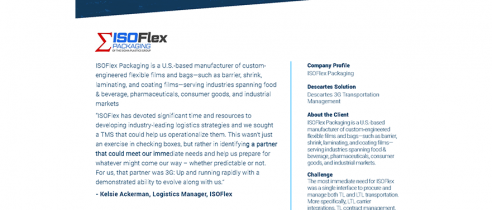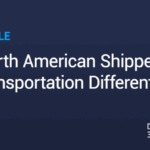Reelables, a UK-based company founded in 2018, has crafted the world’s first shipping label with a built-in tracking device. By connecting to a 5G cellular network, this revolutionary technology provides pinpoint tracking precision without manual intervention.
This transformative technology can shift the entire logistics industry, eradicating human error and exceeding customer visibility demands without businesses needing to change their standard thermal barcode printers. It’s certainly a sector breakthrough, presenting distinctive efficiency, speed, and accuracy advantages over traditional shipping labels.
Granted, the new-to-the-market label technology has yet to be widely adopted. However, key markers indicate that complete industry adoption is probable as the world continues to drive digitization efforts.
Technological Underpinnings
The company notes that technology is revolutionary in the printed electronics field — an active device with coated zinc batteries sharing a paper-thin wireless circuit was previously unseen. Couple that with the realization that the technology can be used where shipping labels are already printed by merely switching the label media, and it’s a genuinely mind-blowing invention.
But what powers this shipping label with an embedded tracking device?
The underpinning technology is a reel-to-reel, thin-film (0.55mm) manufacturing process allowing extraordinarily thin yet supremely cost-efficient wireless circuits to lay inside smart labels.
A coated zinc battery is the most integral integration. Sharing the same base material as the wireless circuit, it’s Reelables’ primary differentiator from companies that still use traditional lithium batteries in tracking devices.
Capabilities
The smart label’s embedded technology connects to 5G cellular networks around the world, offering a myriad of data collection, transmission, and analytics capabilities, such as:
- Printing at high speeds (one second or less)
- Tracking using waybill numbers or serialization is currently built into operations
- Eliminating the need for reverse logistics
- Tracking seamlessly through the Reelables Timelines platform or the business’s own TMS or WMS
- Tracking products across the supply chain
- Reducing thefts, frauds, and missing items
- Generating accurate product data
- Automatically collecting location data and triggering events when shipments arrive/leave warehouses or waypoints
- Providing data synergy between ordering, shipping, and delivery processes/systems
Reelables 5G Smart Labels vs RFID vs GPS
| 5G Smart Labels | RFID | GPS | |
|---|---|---|---|
| Overview | Uses ultra-thin manufacturing processes to embed wireless circuits into labels, so they can connect to 5G network for accurate, to-the-minute tracking. | Radio Frequency Identification retrieves parcel locations in transit and inventory. It holds a scanner with an RFID tag that emits and receives radio signals, storing broadcasted information inside a chip. | Perhaps the most popular tracking technology, GPS devices triangulate speed, time, and direction to determine latitude and longitude. Trackers inside GPS devices compare signals to determine shipment position. |
| Advantages | Little to no implementation challenges — companies only need to change their label media Designed for high-volume applications Simple tracking No software integration, additional infrastructure, or new workflows needed No heavy metals Environmentally safe No reverse logistics Completely disposable Pinpoint tracking accuracy | Read at a short range, making it great for inventory management Systems can process numerous tags at the same time for swift data collection Passive, active, and semi-passive tags available Easily see all shipment information | Enhances safety and security of goods and drivers Enables efficient route planning and dispatching |
| Disadvantages | Cost Not widely available yet | Expensive due to the maintenance, scanner, and chip expenses Some products cause RFID malfunctions Anyone can remove the chip | Signal can be blocked or weakened by physical obstructions Necessitates clear line of sight to multiple satellites for accuracy Requires secure usage guidelines Prone to misuse or hacking Environmental conditions can cause malfunctions Implementation and integration challenges |
Industry Applications and Potential
The company initially created smart labels for freight forwarders only. However, the advent of their latest 5G-connecting creation has turned the tide, opening their doors to a plethora of industries, such as:
- Logistics and 3PLs that want to track shipments on a per-item basis. The labels allow for automatic location data transmission, whether products are in transport or storage.
- Warehouses that aim to achieve highly accurate inventory management and asset tracking using zone-based location sharing and custody chain reporting.
- Air carriers that want to avoid manually scanning shipments for time savings.
- Retailers and manufacturers that ship high-value goods without controlling the infrastructure of their logistics corridors.
The industry has spent years searching for a foolproof method to prevent human error, reduce theft and fraud, and provide seamless, precise tracking. This technology is poised to end the search.
Global Impact and Market Trends
The global supply chain trends are deep-rooted in digitization, with many participants focused on incorporating generative AI, streamlining data acquisition and analysis, providing exceptional visibility, and adopting electric vehicles. The ultra-thin technology powering Reelables labels aligns perfectly with this focus by eradicating the need for human intervention, connecting with accurate networks, and automatically transmitting information.
The Development Roadmap
Reelables notes that the 5G smart labels will initially offer chipset-level NB-IoT integration. However, the brains behind the company say LTE-M is set to be released in the future.
Beyond this business, experts have speculated on the potential advancements in shipping label technology across the industry:
Potential Future Advancements
Augmented reality (AR) packaging is set to hit the market. While it won’t directly impact shipping, the technology will digitally bring the product to life, strengthening customer bonds and improving the overall experience.
Minimalist packaging with reduced layers will go hand-in-hand with ultra-thin smart labels to boost sustainability, eliminate waste, and improve aesthetics.
Industry-Wide Adoption
Thanks to the plethora of advantages awaiting businesses who utilize smart labels, particularly those involving the latest technology, industry-wide adoption is likely. However, complete integration takes time, and such a seismic shift in working methods is bound to be met with resistance from some companies.
That said, the advent of Reelables’ technology has eliminated the need for new workflow or software implementations, easing the path to full integration.
Ongoing Innovation: Shaping the Future of Smart Labels
Ultimately, the ongoing innovation in the space will dictate its direction, enhancing existing tech and giving rise to new ones. With the continuous innovation occurring in the shipping process, the ability to create shipping labels that use advanced technology likely scratches the surface of the infinite ways technology can reshape the shipping industry.







